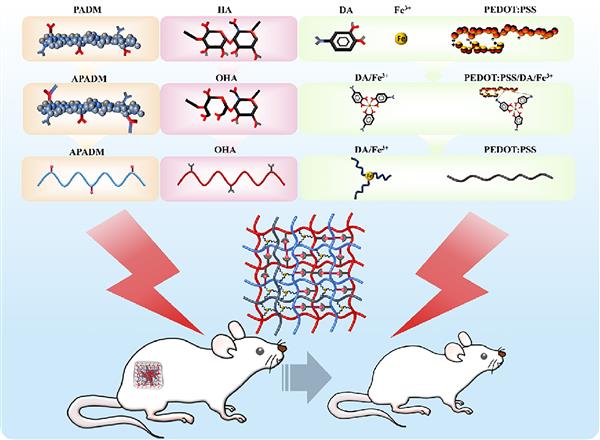作者:Xiaofei Gao, Xinxiang Chai, Yanzhen Lou, Liming Ruan, Zhengfei He, Yunjie Nid, Linggang Sun, Yanfang
关键字:conductive hydrogel; electric stimulation; wound healing; conductivity
论文来源:期刊
具体来源:International Journal of Biological Macromolecules
发表时间:2024年
Abstract: Electrical stimulation (ES) of skin wounds can promote cell proliferation, protein synthesis, inflammatory response, and improve neurological function. In this study, the dynamical cross-linked conductive hydrogels have been developed by integration of poly(3,4-ethylenedioxythiophene):poly(styrene sulfonate) (PEDOT:PSS) into porcine acellular dermal matrix (PADM) and oxidized hyaluronic acid (OHA) using dopamine-Fe complex (DA@Fe) as cross-linking agent. The as-obtained conductive composite hydrogels have the characteristics of rapid gelation, excellent deformation ability, high water absorption, and suitable degradation rate. Four-point probes resistivity measurement system has been used to test the electrical properties of the as-obtained hydrogels, and showing their conductivity at 0.207-0.322 S/m. In addition, the developed dynamical cross-linked conductive hydrogels exhibit excellent biocompatibility, thereby inducing cells proliferation and migration. In vivo results show that the resultant composite hydrogel can accelerate wound healing with combination of electrical stimulation (ES) by promoting expression of vascular factor (CD31) and decreasing the expression of tumor necrosis factor-α (TNF-α).
Keywords: conductive hydrogel; electric stimulation; wound healing; conductivity
